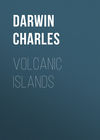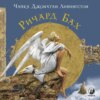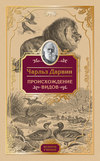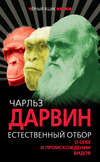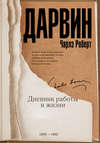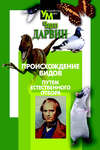Читать книгу: «Volcanic Islands», страница 4
It is singular in how many respects those portions of St. Jago and of Mauritius which I visited agree in their geological history. At both islands, mountains of similar external form, stratification, and (at least in their upper beds) composition, follow in a curved chain the coast-line. These mountains in each case appear originally to have formed parts of one continuous mass. The basaltic strata of which they are composed, from their compact and crystalline structure, seem, when contrasted with the neighbouring basaltic streams of subaerial formation, to have flowed beneath the pressure of the sea, and to have been subsequently elevated. We may suppose that the wide breaches between the mountains were in both cases worn by the waves, during their gradual elevation – of which process, within recent times, there is abundant evidence on the coast-land of both islands. At both, vast streams of more recent basaltic lavas have flowed from the interior of the island, round and between the ancient basaltic hills; at both, moreover, recent cones of eruption are scattered around the circumference of the island; but at neither have eruptions taken place within the period of history. As remarked in the last chapter, it is probable that these ancient basaltic mountains, which resemble (at least in many respects) the basal and disturbed remnants of two gigantic volcanoes, owe their present form, structure, and position, to the action of similar causes.
ST. PAUL'S ROCKS.
This small island is situated in the Atlantic Ocean, nearly one degree north of the equator, and 540 miles distant from South America, in 29 degrees 15 minutes west longitude. Its highest point is scarcely fifty feet above the level of the sea; its outline is irregular, and its entire circumference barely three-quarters of a mile. This little point of rock rises abruptly out of the ocean; and, except on its western side, soundings were not obtained, even at the short distance of a quarter of a mile from its shore. It is not of volcanic origin; and this circumstance, which is the most remarkable point in its history (as will hereafter be referred to), properly ought to exclude it from the present volume. It is composed of rocks, unlike any which I have met with, and which I cannot characterise by any name, and must therefore describe.
The simplest, and one of the most abundant kinds, is a very compact, heavy, greenish-black rock, having an angular, irregular fracture, with some points just hard enough to scratch glass, and infusible. This variety passes into others of paler green tints, less hard, but with a more crystalline fracture, and translucent on their edges; and these are fusible into a green enamel. Several other varieties are chiefly characterised by containing innumerable threads of dark-green serpentine, and by having calcareous matter in their interstices. These rocks have an obscure, concretionary structure, and are full of variously coloured angular pseudo fragments. These angular pseudo fragments consist of the first-described dark green rock, of a brown softer kind, of serpentine, and of a yellowish harsh stone, which, perhaps, is related to serpentine rock. There are other vesicular, calcareo-ferruginous, soft stones. There is no distinct stratification, but parts are imperfectly laminated; and the whole abounds with innumerable veins, and vein-like masses, both small and large. Of these vein-like masses, some calcareous ones, which contain minute fragments of shells, are clearly of subsequent origin to the others.
A GLOSSY INCRUSTATION.
Extensive portions of these rocks are coated by a layer of a glossy polished substance, with a pearly lustre and of a greyish white colour; it follows all the inequalities of the surface, to which it is firmly attached. When examined with a lens, it is found to consist of numerous exceedingly thin layers, their aggregate thickness being about the tenth of an inch. It is considerably harder than calcareous spar, but can be scratched with a knife; under the blowpipe it scales off, decrepitates, slightly blackens, emits a fetid odour, and becomes strongly alkaline: it does not effervesce in acids. (In my "Journal" I have described this substance; I then believed that it was an impure phosphate of lime.) I presume this substance has been deposited by water draining from the birds' dung, with which the rocks are covered. At Ascension, near a cavity in the rocks which was filled with a laminated mass of infiltrated birds' dung, I found some irregularly formed, stalactitical masses of apparently the same nature. These masses, when broken, had an earthy texture; but on their outsides, and especially at their extremities, they were formed of a pearly substance, generally in little globules, like the enamel of teeth, but more translucent, and so hard as just to scratch plate-glass. This substance slightly blackens under the blowpipe, emits a bad smell, then becomes quite white, swelling a little, and fuses into a dull white enamel; it does not become alkaline; nor does it effervesce in acids. The whole mass had a collapsed appearance, as if in the formation of the hard glossy crust the whole had shrunk much. At the Abrolhos Islands on the coast of Brazil, where also there is much birds' dung, I found a great quantity of a brown, arborescent substance adhering to some trap-rock. In its arborescent form, this substance singularly resembles some of the branched species of Nullipora. Under the blowpipe, it behaves like the specimens from Ascension; but it is less hard and glossy, and the surface has not the shrunk appearance.
CHAPTER III. – ASCENSION
Basaltic lavas.
Numerous craters truncated on the same side.
Singular structure of volcanic bombs.
Aeriform explosions.
Ejected granitic fragments.
Trachytic rocks.
Singular veins.
Jasper, its manner of formation.
Concretions in pumiceous tuff.
Calcareous deposits and frondescent incrustations on the coast.
Remarkable laminated beds, alternating with, and passing into, obsidian.
Origin of obsidian.
Lamination of volcanic rocks.
(MAP 2: THE ISLAND OF ASCENSION.)
This island is situated in the Atlantic Ocean, in latitude 8 degrees S., longitude 14 degrees W. It has the form of an irregular triangle (see Map 2), each side being about six miles in length. Its highest point is 2,870 feet ("Geographical Journal" volume 5 page 243.) above the level of the sea. The whole is volcanic, and, from the absence of proofs to the contrary, I believe of subaerial origin. The fundamental rock is everywhere of a pale colour, generally compact, and of a feldspathic nature. In the S.E. portion of the island, where the highest land is situated, well characterised trachyte, and other congenerous rocks of that varying family, occur. Nearly the entire circumference is covered up by black and rugged streams of basaltic lava, with here and there a hill or single point of rock (one of which near the sea-coast, north of the Fort, is only two or three yards across) of the trachyte still remaining exposed.
BASALTIC ROCKS.
The overlying basaltic lava is in some parts extremely vesicular, in others little so; it is of a black colour, but sometimes contains crystals of glassy feldspar, and seldom much olivine. These streams appear to have possessed singularly little fluidity; their side walls and lower ends being very steep, and even as much as between twenty and thirty feet in height. Their surface is extraordinarily rugged, and from a short distance appears as if studded with small craters. These projections consist of broad, irregularly conical, hillocks, traversed by fissures, and composed of the same unequally scoriaceous basalt with the surrounding streams, but having an obscure tendency to a columnar structure; they rise to a height between ten and thirty feet above the general surface, and have been formed, as I presume, by the heaping up of the viscid lava at points of greater resistance. At the base of several of these hillocks, and occasionally likewise on more level parts, solid ribs, composed of angulo-globular masses of basalt, resembling in size and outline arched sewers or gutters of brickwork, but not being hollow, project between two or three feet above the surface of the streams; what their origin may have been, I do not know. Many of the superficial fragments from these basaltic streams present singularly convoluted forms; and some specimens could hardly be distinguished from logs of dark-coloured wood without their bark.
Many of the basaltic streams can be traced, either to points of eruption at the base of the great central mass of trachyte, or to separate, conical, red-coloured hills, which are scattered over the northern and western borders of the island. Standing on the central eminence, I counted between twenty and thirty of these cones of eruption. The greater number of them had their truncated summits cut off obliquely, and they all sloped towards the S.E., whence the trade-wind blows. (M. Lesson in the "Zoology of the Voyage of the 'Coquille'" page 490 has observed this fact. Mr. Hennah ("Geolog. Proceedings" 1835 page 189) further remarks that the most extensive beds of ashes at Ascension invariably occur on the leeward side of the island.) This structure no doubt has been caused by the ejected fragments and ashes being always blown, during eruptions, in greater quantity towards one side than towards the other. M. Moreau de Jonnes has made a similar observation with respect to the volcanic orifices in the West Indian Islands.
VOLCANIC BOMBS.
(FIGURE 3: FRAGMENT OF A SPHERICAL VOLCANIC BOMB, with the interior parts coarsely cellular, coated by a concentric layer of compact lava, and this again by a crust of finely cellular rock.
FIGURE 4: VOLCANIC BOMB OF OBSIDIAN FROM AUSTRALIA. The upper figure gives a front view; the lower a side view of the same object.)
These occur in great numbers strewed on the ground, and some of them lie at considerable distances from any points of eruption. They vary in size from that of an apple to that of a man's body; they are either spherical or pear-shaped, or with the hinder part (corresponding to the tail of a comet) irregular, studded with projecting points, and even concave. Their surfaces are rough, and fissured with branching cracks; their internal structure is either irregularly scoriaceous and compact, or it presents a symmetrical and very curious appearance. An irregular segment of a bomb of this latter kind, of which I found several, is accurately represented in Figure 3. Its size was about that of a man's head. The whole interior is coarsely cellular; the cells averaging in diameter about the tenth of an inch; but nearer the outside they gradually decrease in size. This part is succeeded by a well-defined shell of compact lava, having a nearly uniform thickness of about the third of an inch; and the shell is overlaid by a somewhat thicker coating of finely cellular lava (the cells varying from the fiftieth to the hundredth of an inch in diameter), which forms the external surface: the line separating the shell of compact lava from the outer scoriaceous crust is distinctly defined. This structure is very simply explained, if we suppose a mass of viscid, scoriaceous matter, to be projected with a rapid, rotatory motion through the air; for whilst the external crust, from cooling, became solidified (in the state we now see it), the centrifugal force, by relieving the pressure in the interior parts of the bomb, would allow the heated vapours to expand their cells; but these being driven by the same force against the already-hardened crust, would become, the nearer they were to this part, smaller and smaller or less expanded, until they became packed into a solid, concentric shell. As we know that chips from a grindstone (Nichol "Architecture of the Heavens.") can be flirted off, when made to revolve with sufficient velocity, we need not doubt that the centrifugal force would have power to modify the structure of a softened bomb, in the manner here supposed. Geologists have remarked, that the external form of a bomb at once bespeaks the history of its aerial course, and few now see that the internal structure can speak, with almost equal plainness, of its rotatory movement.
M. Bory St. Vincent ("Voyage aux Quatre Isles d'Afrique" tome 1 page 222.) has described some balls of lava from the Isle of Bourbon, which have a closely similar structure. His explanation, however (if I understand it rightly), is very different from that which I have given; for he supposes that they have rolled, like snowballs, down the sides of the crater. M. Beudant ("Voyage en Hongrie" tome 2 page 214.), also, has described some singular little balls of obsidian, never more than six or eight inches in diameter, which he found strewed on the surface of the ground: their form is always oval; sometimes they are much swollen in the middle, and even spindle-shaped: their surface is regularly marked with concentric ridges and furrows, all of which on the same ball are at right angles to one axis: their interior is compact and glassy. M. Beudant supposes that masses of lava, when soft, were shot into the air, with a rotatory movement round the same axis, and that the form and superficial ridges of the bombs were thus produced. Sir Thomas Mitchell has given me what at first appears to be the half of a much flattened oval ball of obsidian; it has a singular artificial-like appearance, which is well represented (of the natural size) in Figure 4. It was found in its present state, on a great sandy plain between the rivers Darling and Murray, in Australia, and at the distance of several hundred miles from any known volcanic region. It seems to have been embedded in some reddish tufaceous matter; and may have been transported either by the aborigines or by natural means. The external saucer consists of compact obsidian, of a bottle-green colour, and is filled with finely cellular black lava, much less transparent and glassy than the obsidian. The external surface is marked with four or five not quite perfect ridges, which are represented rather too distinctly in Figure 4. Here, then, we have the external structure described by M. Beudant, and the internal cellular condition of the bombs from Ascension. The lip of the saucer is slightly concave, exactly like the margin of a soup-plate, and its inner edge overlaps a little the central cellular lava. This structure is so symmetrical round the entire circumference, that one is forced to suppose that the bomb burst during its rotatory course, before being quite solidified, and that the lip and edges were thus slightly modified and turned inwards. It may be remarked that the superficial ridges are in planes, at right angles to an axis, transverse to the longer axis of the flattened oval: to explain this circumstance, we may suppose that when the bomb burst, the axis of rotation changed.
AERIFORM EXPLOSIONS.
The flanks of Green Mountain and the surrounding country are covered by a great mass, some hundred feet in thickness, of loose fragments. The lower beds generally consist of fine-grained, slightly consolidated tuffs (Some of this peperino, or tuff, is sufficiently hard not to be broken by the greatest force of the fingers.), and the upper beds of great loose fragments, with alternating finer beds. (On the northern side of the Green Mountain a thin seam, about an inch in thickness, of compact oxide of iron, extends over a considerable area; it lies conformably in the lower part of the stratified mass of ashes and fragments. This substance is of a reddish- brown colour, with an almost metallic lustre; it is not magnetic, but becomes so after having been heated under the blowpipe, by which it is blackened and partly fused. This seam of compact stone, by intercepting the little rain-water which falls on the island, gives rise to a small dripping spring, first discovered by Dampier. It is the only fresh water on the island, so that the possibility of its being inhabited has entirely depended on the occurrence of this ferruginous layer.) One white ribbon- like layer of decomposed, pumiceous breccia, was curiously bent into deep unbroken curves, beneath each of the large fragments in the superincumbent stratum. From the relative position of these beds, I presume that a narrow- mouthed crater, standing nearly in the position of Green Mountain, like a great air-gun, shot forth, before its final extinction, this vast accumulation of loose matter. Subsequently to this event, considerable dislocations have taken place, and an oval circus has been formed by subsidence. This sunken space lies at the north-eastern foot of Green Mountain, and is well represented in Map 2. Its longer axis, which is connected with a N.E. and S.W. line of fissure, is three-fifths of a nautical mile in length; its sides are nearly perpendicular, except in one spot, and about four hundred feet in height; they consist, in the lower part, of a pale basalt with feldspar, and in the upper part, of the tuff and loose ejected fragments; the bottom is smooth and level, and under almost any other climate a deep lake would have been formed here. From the thickness of the bed of loose fragments, with which the surrounding country is covered, the amount of aeriform matter necessary for their projection must have been enormous; hence we may suppose it probable that after the explosions vast subterranean caverns were left, and that the falling in of the roof of one of these produced the hollow here described. At the Galapagos Archipelago, pits of a similar character, but of a much smaller size, frequently occur at the bases of small cones of eruption.
EJECTED GRANITIC FRAGMENTS.
In the neighbourhood of Green Mountain, fragments of extraneous rock are not unfrequently found embedded in the midst of masses of scoriae. Lieutenant Evans, to whose kindness I am indebted for much information, gave me several specimens, and I found others myself. They nearly all have a granitic structure, are brittle, harsh to the touch, and apparently of altered colours.
FIRST, a white syenite, streaked and mottled with red; it consists of well- crystallised feldspar, numerous grains of quartz, and brilliant, though small, crystals of hornblende. The feldspar and hornblende in this and the succeeding cases have been determined by the reflecting goniometer, and the quartz by its action under the blowpipe. The feldspar in these ejected fragments, like the glassy kind in the trachyte, is from its cleavage a potash-feldspar.
SECONDLY, a brick-red mass of feldspar, quartz, and small dark patches of a decayed mineral; one minute particle of which I was able to ascertain, by its cleavage, to be hornblende.
THIRDLY, a mass of confusedly crystallised white feldspar, with little nests of a dark-coloured mineral, often carious, externally rounded, having a glossy fracture, but no distinct cleavage: from comparison with the second specimen, I have no doubt that it is fused hornblende.
FOURTHLY, a rock, which at first appears a simple aggregation of distinct and large-sized crystals of dusty-coloured Labrador feldspar (Professor Miller has been so kind as to examine this mineral. He obtained two good cleavages of 86 degrees 30 minutes and 86 degrees 50 minutes. The mean of several, which I made, was 86 degrees 30 minutes. Professor Miller states that these crystals, when reduced to a fine powder, are soluble in hydrochloric acid, leaving some undissolved silex behind; the addition of oxalate of ammonia gives a copious precipitate of lime. He further remarks, that according to Von Kobell, anorthite (a mineral occurring in the ejected fragments at Mount Somma) is always white and transparent, so that if this be the case, these crystals from Ascension must be considered as Labrador feldspar. Professor Miller adds, that he has seen an account, in Erdmann's "Journal fur tecnische Chemie," of a mineral ejected from a volcano which had the external characters of Labrador feldspar, but differed in the analysis from that given by mineralogists of this mineral: the author attributed this difference to an error in the analysis of Labrador feldspar, which is very old.); but in their interstices there is some white granular feldspar, abundant scales of mica, a little altered hornblende, and, as I believe, no quartz. I have described these fragments in detail, because it is rare to find granitic rocks ejected from volcanoes with their MINERALS UNCHANGED, as is the case with the first specimen, and partially with the second. (Daubeny, in his work on Volcanoes page 386, remarks that this is the case; and Humboldt, in his "Personal Narrative" volume 1 page 236, says "In general, the masses of known primitive rocks, I mean those which perfectly resemble our granites, gneiss, and mica-slate, are very rare in lavas: the substances we generally denote by the name of granite, thrown out by Vesuvius, are mixtures of nepheline, mica, and pyroxene.") One other large fragment, found in another spot, is deserving of notice; it is a conglomerate, containing small fragments of granitic, cellular, and jaspery rocks, and of hornstone porphyries, embedded in a base of wacke, threaded by numerous thin layers of a concretionary pitchstone passing into obsidian. These layers are parallel, slightly tortuous, and short; they thin out at their ends, and resemble in form the layers of quartz in gneiss. It is probable that these small embedded fragments were not separately ejected, but were entangled in a fluid volcanic rock, allied to obsidian; and we shall presently see that several varieties of this latter series of rock assume a laminated structure.
TRACHYTIC SERIES OF ROCKS.
Those occupy the more elevated and central, and likewise the south-eastern, parts of the island. The trachyte is generally of a pale brown colour, stained with small darker patches; it contains broken and bent crystals of glassy feldspar, grains of specular iron, and black microscopical points, which latter, from being easily fused, and then becoming magnetic, I presume are hornblende. The greater number of the hills, however, are composed of a quite white, friable stone, appearing like a trachytic tuff. Obsidian, hornstone, and several kinds of laminated feldspathic rocks, are associated with the trachyte. There is no distinct stratification; nor could I distinguish a crateriform structure in any of the hills of this series. Considerable dislocations have taken place; and many fissures in these rocks are yet left open, or are only partially filled with loose fragments. Within the space (This space is nearly included by a line sweeping round Green Mountain, and joining the hills, called the Weather Port Signal, Holyhead, and that denominated (improperly in a geological sense) "the Crater of an old volcano."), mainly formed of trachyte, some basaltic streams have burst forth; and not far from the summit of Green Mountain, there is one stream of quite black, vesicular basalt, containing minute crystals of glassy feldspar, which have a rounded appearance.
The soft white stone above mentioned is remarkable from its singular resemblance, when viewed in mass, to a sedimentary tuff: it was long before I could persuade myself that such was not its origin; and other geologists have been perplexed by closely similar formations in trachytic regions. In two cases, this white earthy stone formed isolated hills; in a third, it was associated with columnar and laminated trachyte; but I was unable to trace an actual junction. It contains numerous crystals of glassy feldspar and black microscopical specks, and is marked with small darker patches, exactly as in the surrounding trachyte. Its basis, however, when viewed under the microscope, is generally quite earthy; but sometimes it exhibits a decidedly crystalline structure. On the hill marked "Crater of an old volcano," it passes into a pale greenish-grey variety, differing only in its colour, and in not being so earthy; the passage was in one case effected insensibly; in another, it was formed by numerous, rounded and angular, masses of the greenish variety, being embedded in the white variety; – in this latter case, the appearance was very much like that of a sedimentary deposit, torn up and abraded during the deposition of a subsequent stratum. Both these varieties are traversed by innumerable tortuous veins (presently to be described), which are totally unlike injected dikes, or indeed any other veins which I have ever seen. Both varieties include a few scattered fragments, large and small, of dark- coloured scoriaceous rocks, the cells of some of which are partially filled with the white earthy stone; they likewise include some huge blocks of a cellular porphyry. (The porphyry is dark coloured; it contains numerous, often fractured, crystals of white opaque feldspar, also decomposing crystals of oxide of iron; its vesicles include masses of delicate, hair- like, crystals, apparently of analcime.) These fragments project from the weathered surface, and perfectly resemble fragments embedded in a true sedimentary tuff. But as it is known that extraneous fragments of cellular rock are sometimes included in columnar trachyte, in phonolite (D'Aubuisson "Traite de Geognosie" tome 2 page 548.), and in other compact lavas, this circumstance is not any real argument for the sedimentary origin of the white earthy stone. (Dr. Daubeny on Volcanoes, page 180 seems to have been led to believe that certain trachytic formations of Ischia and of the Puy de Dome, which closely resemble these of Ascension, were of sedimentary origin, chiefly from the frequent presence in them "of scoriform portions, different in colour from the matrix." Dr. Daubeny adds, that on the other hand, Brocchi, and other eminent geologists, have considered these beds as earthy varieties of trachyte; he considers the subject deserving of further attention.) The insensible passage of the greenish variety into the white one, and likewise the more abrupt passage by fragments of the former being embedded in the latter, might result from slight differences in the composition of the same mass of molten stone, and from the abrading action of one such part still fluid on another part already solidified. The curiously formed veins have, I believe, been formed by siliceous matter being subsequently segregated. But my chief reason for believing that these soft earthy stones, with their extraneous fragments, are not of sedimentary origin, is the extreme improbability of crystals of feldspar, black microscopical specks, and small stains of a darker colour occurring in the same proportional numbers in an aqueous deposit, and in masses of solid trachyte. Moreover, as I have remarked, the microscope occasionally reveals a crystalline structure in the apparently earthy basis. On the other hand, the partial decomposition of such great masses of trachyte, forming whole mountains, is undoubtedly a circumstance of not easy explanation.
VEINS IN THE EARTHY TRACHYTIC MASSES.
These veins are extraordinarily numerous, intersecting in the most complicated manner both coloured varieties of the earthy trachyte: they are best seen on the flanks of the "Crater of the old volcano." They contain crystals of glassy feldspar, black microscopical specks and little dark stains, precisely as in the surrounding rock; but the basis is very different, being exceedingly hard, compact, somewhat brittle, and of rather less easy fusibility. The veins vary much, and suddenly, from the tenth of an inch to one inch in thickness; they often thin out, not only on their edges, but in their central parts, thus leaving round, irregular apertures; their surfaces are rugged. They are inclined at every possible angle with the horizon, or are horizontal; they are generally curvilinear, and often interbranch one with another. From their hardness they withstand weathering, and projecting two or three feet above the ground, they occasionally extend some yards in length; these plate-like veins, when struck, emit a sound, almost like that of a drum, and they may be distinctly seen to vibrate; their fragments, which are strewed on the ground, clatter like pieces of iron when knocked against each other. They often assume the most singular forms; I saw a pedestal of the earthy trachyte, covered by a hemispherical portion of a vein, like a great umbrella, sufficiently large to shelter two persons. I have never met with, or seen described, any veins like these; but in form they resemble the ferruginous seams, due to some process of segregation, occurring not uncommonly in sandstones, – for instance, in the New Red sandstone of England. Numerous veins of jasper and of siliceous sinter, occurring on the summit of this same hill, show that there has been some abundant source of silica, and as these plate-like veins differ from the trachyte only in their greater hardness, brittleness, and less easy fusibility, it appears probable that their origin is due to the segregation or infiltration of siliceous matter, in the same manner as happens with the oxides of iron in many sedimentary rocks.
SILICEOUS SINTER AND JASPER.
The siliceous sinter is either quite white, of little specific gravity, and with a somewhat pearly fracture, passing into pinkish pearl quartz; or it is yellowish white, with a harsh fracture, and it then contains an earthy powder in small cavities. Both varieties occur, either in large irregular masses in the altered trachyte, or in seams included in broad, vertical, tortuous, irregular veins of a compact, harsh stone of a dull red colour, appearing like a sandstone. This stone, however, is only altered trachyte; and a nearly similar variety, but often honeycombed, sometimes adheres to the projecting plate-like veins, described in the last paragraph. The jasper is of an ochre yellow or red colour; it occurs in large irregular masses, and sometimes in veins, both in the altered trachyte and in an associated mass of scoriaceous basalt. The cells of the scoriaceous basalt are lined or filled with fine, concentric layers of chalcedony, coated and studded with bright-red oxide of iron. In this rock, especially in the rather more compact parts, irregular angular patches of the red jasper are included, the edges of which insensibly blend into the surrounding mass; other patches occur having an intermediate character between perfect jasper and the ferruginous, decomposed, basaltic base. In these patches, and likewise in the large vein-like masses of jasper, there occur little rounded cavities, of exactly the same size and form with the air-cells, which in the scoriaceous basalt are filled and lined with layers of chalcedony. Small fragments of the jasper, examined under the microscope, seem to resemble the chalcedony with its colouring matter not separated into layers, but mingled in the siliceous paste, together with some impurities. I can understand these facts, – namely, the blending of the jasper into the semi-decomposed basalt, – its occurrence in angular patches, which clearly do not occupy pre-existing hollows in the rock, – and its containing little vesicles filled with chalcedony, like those in the scoriaceous lava, – only on the supposition that a fluid, probably the same fluid which deposited the chalcedony in the air-cells, removed in those parts where there were no cavities, the ingredients of the basaltic rock, and left in their place silica and iron, and thus produced the jasper. In some specimens of silicified wood, I have observed, that in the same manner as in the basalt, the solid parts were converted into a dark-coloured homogeneous stone, whereas the cavities formed by the larger sap-vessels (which may be compared with the air-vesicles in the basaltic lava) and other irregular hollows, apparently produced by decay, were filled with concentric layers of chalcedony; in this case, there can be little doubt that the same fluid deposited the homogeneous base and the chalcedonic layers. After these considerations, I cannot doubt but that the jasper of Ascension may be viewed as a volcanic rock silicified, in precisely the same sense as this term is applied to wood, when silicified; we are equally ignorant of the means by which every atom of wood, whilst in a perfect state, is removed and replaced by atoms of silica, as we are of the means by which the constituent parts of a volcanic rock could be thus acted on. (Beudant "Voyage en Hongrie" tome 3 pages 502, 504 describes kidney-shaped masses of jasper-opal, which either blend into the surrounding trachytic conglomerate, or are embedded in it like chalk-flints; and he compares them with the fragments of opalised wood, which are abundant in this same formation. Beudant, however, appears to have viewed the process of their formation rather as one of simple infiltration than of molecular exchange; but the presence of a concretion, wholly different from the surrounding matter, if not formed in a pre-existing hollow, clearly seems to me to require, either a molecular or mechanical displacement of the atoms, which occupied the space afterwards filled by it. The jasper-opal of Hungary passes into chalcedony, and therefore in this case, as in that of Ascension, jasper seems to be intimately related in origin with chalcedony.) I was led to the careful examination of these rocks, and to the conclusion here given, from having heard the Rev. Professor Henslow express a similar opinion, regarding the origin in trap-rocks of many chalcedonies and agates. Siliceous deposits seem to be very general, if not of universal occurrence, in partially decomposed trachytic tuffs (Beudant "Voyage Min." tome 3 page 507 enumerates cases in Hungary, Germany, Central France, Italy, Greece, and Mexico.); and as these hills, according to the view above given, consist of trachyte softened and altered in situ, the presence of free silica in this case may be added as one more instance to the list.

